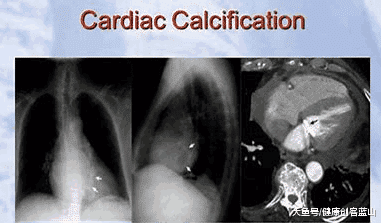韩国国立大学 发现血管钙化过程类似于骨形成过程Manipulating calcium accumulation in blood vessels may provide a new way to treat heart disease
心脏钙化(Cardiac Calcification)
动脉硬化是心脏病的主要原因。它是由血管中的钙积累引起的,导致血流受阻和心脏并发症。虽然动脉粥样硬化的许多危险因素已经被确定,但原因尚不清楚,而且目前还无法逆转它。在一项新的研究中,研究人员确定了在血管壁上形成钙的细胞。
完整的故事
动脉硬化是心脏病的主要原因。它是由血管中的钙积累引起的,导致动脉变得狭窄和僵硬,阻碍血液流动,导致心脏并发症。虽然动脉粥样硬化的许多危险因素已经被确定,但原因尚不清楚,而且目前还无法逆转它。在4月9日发表在《公共科学图书馆·生物学》(PLOS Biology)杂志上的一项新研究中,研究人员描述了促使钙在血管壁上积聚的细胞。
在血管中钙的积累过程类似于骨形成过程,需要在骨形成细胞(成骨细胞)和破骨细胞(破骨细胞)之间保持平衡。在这项新的研究中,Kim Hyo-Soo和他的同事描述了血管钙化祖细胞群的起源,以及这些细胞分化成不同类型细胞的潜力。
膝关节附近动脉钙化
首尔国立大学的Kim博士说:“我们证明了动脉中的血管钙化祖细胞有成为成骨细胞或破骨细胞的潜力。”“某种化学物质可以促使这些细胞成为破骨细胞,从而导致血管软化。”
研究人员将老鼠主动脉的细胞分为两组。两组都起源于骨髓和细胞表面蛋白表达一种叫Sca-1的蛋白, 但只有一组表达另一个名为PDGFRα的细胞表面蛋白。他们发现那些细胞只表达Sca-1蛋白的细胞可以成为成骨细胞和破骨细胞, 而同时表达Sca-1和PDGFRαz的细胞将发育为成骨细胞的谱系。
团队然后用一种叫做PPARγ的蛋白质处理这些细胞, PPARγ蛋白质促进破骨细胞的形成和抑制成骨细胞的形成。被PPARγ处理后, 表达Sca-1蛋白的细胞优先发育为破骨细胞样细胞。
此外,体内研究表明,把 双向细胞注入动脉粥样硬化模型的小鼠,增加了动脉的钙沉积。而把经过PPARγ处理的细胞则显著降低这种影响甚至逆转钙化。
饮食中过高的磷可能是动脉钙化的原因之一
“这些发现表明一种钙化祖细胞亚型为预防钙化提供了一个新的治疗靶点,”Kim博士说。“这为开发新药以抑制动脉硬化打开了可能性,从而降低心脏病的风险。”
https://s.click.taobao.com/Z5iZKNw
Manipulating calcium accumulation in blood vessels may provide a new way to treat heart disease
Date:
April 9, 2013
Source:
Public Library of Science
Summary:
Hardening of the arteries, or atherosclerosis, is the primary cause of heart disease. It's caused by calcium accumulation in the blood vessels, which leads to obstruction of blood flow and heart complications. Although many risk factors for atherosclerosis have been identified, the cause isn't known and there's currently no way to reverse it once it sets in. In a new study, researchers have characterized the cells responsible for driving this calcium build-up in vessel walls.
Share:
FULL STORY
Hardening of the arteries, or atherosclerosis, is the primary cause of heart disease. It is caused by calcium accumulation in the blood vessels, which leads to arteries becoming narrow and stiff, obstructing blood flow and leading to heart complications. Although many risk factors for atherosclerosis have been identified, the cause is not known and there is currently no way to reverse it once it sets in. In a new study published 9th April in the open access journal PLOS Biology, researchers have characterized the cells responsible for driving this calcium build-up in vessel walls.
The process of calcium accumulation in blood vessels resembles bone formation and involves maintaining a balance between bone-forming cells called osteoblasts and bone-destroying cells called osteoclasts. In the new study, Hyo-Soo Kim and colleagues characterize the origin of a population of vascular calcifying progenitor cells, and the potential of these cells to differentiate into different cell types.
"We show that vascular calcifying progenitor cells in the artery have the potential to become either osteoblasts or osteoclasts," said Dr Kim of Seoul National University. "And a certain chemical can push these cells towards becoming osteoclasts, which leads to the softening of the blood vessels."
The researchers sorted cells from the aortas of mice into two groups. Both groups originated from bone marrow and expressed a cell surface protein, called Sca-1, but only one group expressed another cell surface protein called PDGFRα. They found that the cells which only expressed Sca-1 could become either osteoblasts or osteoclasts, whereas the cells which expressed both Sca-1 and PDGFRα were committed to an osteoblastic lineage.
The team then treated the cells with a protein called PPARγ, which is known to promote the formation of osteoclasts and inhibit the formation of osteoblasts. When treated with PPARγ, only Sca-1 expressed cells preferentially differentiated into osteoclast-like cells. Furthermore, in vivo study demonstrated that, while bidirectional cells that were injected into mouse models of atherosclerosis increased the severity of calcium build-up in arteries, cells that were then treated with a drug activating PPARγ markedly decreased this effect and even reversed the calcification.
"These findings suggest that a subtype of calcifying progenitor cells offer a new therapeutic target for the prevention of calcification," said Dr Kim. "This opens up the possibility of new drug development to inhibit the hardening of the arteries, and thereby reduce the risk of heart disease."
https://www.sciencedaily.com/releases/2013/04/130409173500.htm



.png)
.png)